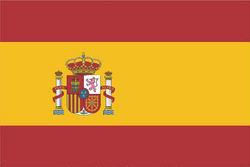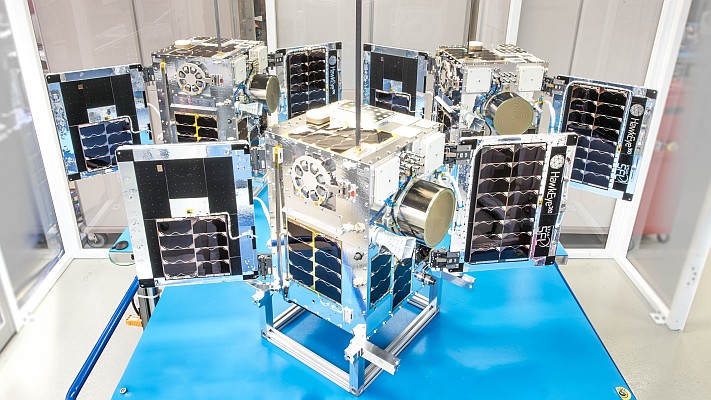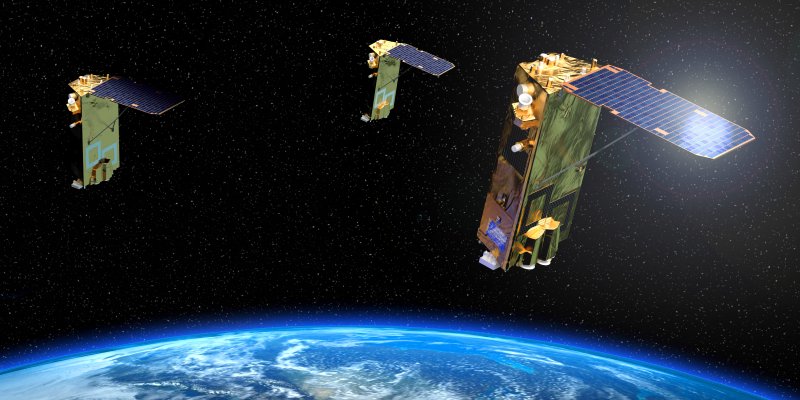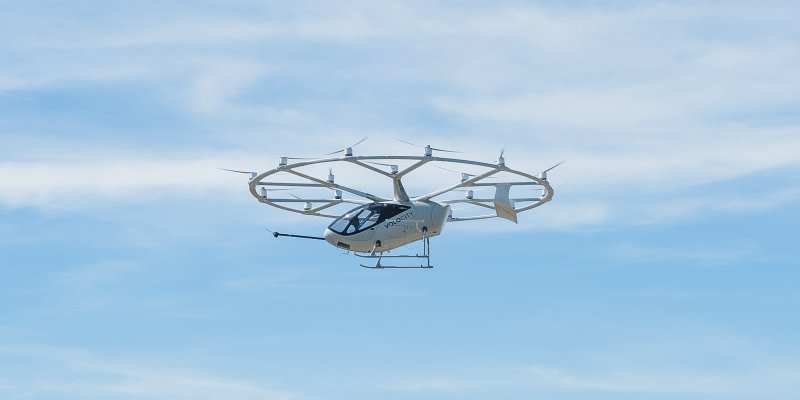Images reveal the most Antarctic ice on record and the Aral Sea before it dried up.
Scientists have uncovered a cache of satellite images of Earth from the 1960s that had been forgotten in storage for nearly 50 years and that push back the first satellite images of our planet a full 17 years.
The trove includes the first publicly available satellite photos of Europe, the earliest aerial views of Antarctica’s ice, and a record of Central Asia’s Aral Sea before it dried up. There’s also a rare photo of the most powerful storm to hit North America in modern times.
The images, when compared with recent satellite photos, show how humankind has changed the planet, from deforestation to changes in sea ice. (Related: “Maps From Space Show World’s Disappearing Forests.”)
Among the images from 1964 were views of Antarctica that showed a greater extent of sea ice than ever measured since. That is, until recent weeks, when the 1964 record was broken just as it was discovered to be a record at all. Unlike Arctic sea ice, which has been in decline due to global warming, the extent of Antarctic ice has varied, making the historical data all the more important for scientists trying to understand what drives changes there. (Related: “Shrinking Arctic Ice Prompts Drastic Change in National Geographic Atlas.”)
Earth scientists David Gallaher and Garrett Campbell liberated the data from a National Climatic Data Center archive in North Carolina, uncovering 25 boxes of magnetic tapes and photographic film from three Nimbus weather satellites launched in the 1960s and 1970s.
Gallaher had heard about the data at a conference and called the National Climatic Data Center to request access to some pictures of Greenland. “We have no way of figuring out what’s Greenland,” came the reply.
That’s because the data had never been sorted or digitized. So Gallaher and Campbell took on the painstaking process of digitizing hundreds of thousands of photos and making them publicly available.
The grainy images are from “the Precambrian of satellite data,” Gallaher says.
The pair say that many more treasures may be waiting to be found among the images.
“We pried open the box, but we didn’t by any means pull out [everything] in there,” says Gallaher. The scientists do not have enough funding to analyze all they found and are now raising money to make more data available to the public.
“We’re still hoping to get three more years of data,” says Campbell. For now, satellite images that were obtained at a cost that would amount to billions in today’s dollars, according to the researchers, remain in the dark.
National Geographic spoke with Gallaher and Campbell from their office at the National Snow and Ice Data Center at the University of Colorado, Boulder, about some of the most surprising images:

First Satellite Picture of Europe
The 1964 Nimbus satellite images of the southern coast of Norway and the Pyrenees may well be the first images of Europe taken from space.
It’s possible that the CIA’s Corona satellite took even earlier pictures of Europe and the Soviet Union, but those images haven’t been made public. (See “Cold War Spy-Satellite Images Unveil Lost Cities.”)
The Nimbus images are certainly no Google Earth: Clouds obscure large parts of the photograph, and the detailed modern image at right shows how much progress has been made since. Campbell insists, however, that even these images could be put to scientific use.
“One could look at snow cover in Norway from the pictures, see what has changed from the ’60s to now,” he says, noting that if the data can be used to measure the extent of sea ice coverage, the same analysis techniques could probably work for snow cover as well.

The Most, and Least, Antarctic Sea Ice
The newfound Nimbus satellite photos give scientists their earliest look yet at Antarctica before global warming.
Using modern photo processing to stitch together the Nimbus images, the two researchers and their teams reconstructed the area covered by sea ice in 1964, 1966, and 1969.
What they found astonished them: The images revealed new records for both the smallest maximum sea ice ever recorded and the largest. The latter record was just broken this year. The two records were just two years apart, but the difference in sea ice extent was more than 1.5 million square miles (4 million square kilometers), an area twice the size of Mexico.
“We’re talking a 20 percent difference,” says Gallaher. “That’s a sizeable change.”
Diminishing sea ice has been blamed for the declining health of polar seas; it’s not just the polar bears in the Arctic that depend upon the ice but entire ecosystems of algae, krill, fish, birds, and seals that need the ice to survive. On a larger scale, the ice reflects the sun’s heat, slowing the oceans’ warming.

A Mysterious Hole in the Arctic Ice Cap
The Nimbus satellites also caught images of the Arctic before warming from climate change accelerated. Gallaher and Campbell were surprised to see some mysterious holes in the ice in the old images.
Holes in the Arctic ice are a common phenomenon today, as the Arctic warms. But in the colder 1960s, a large patch of thin or melted ice was unexpected—and nothing like it was seen again until the 21st century.
“It’s an intriguing thing, but we haven’t figured out what it is, or verified what it is,” says Campbell. “It looks like open water, but it could be very thin new ice that formed in a break in the old ice.”
Unlike modern satellite images, the Nimbus images are not high-definition or in color, meaning that the subtle differences between new ice, thin ice, melted ice, and open water are not always apparent.

Nimbus 3 Catches 1969’s Hurricane Camille
In August 1969, the Gulf Coast was smashed by the monstrous category 5 Hurricane Camille, which destroyed most of the area’s weather stations, killed 239 people, and caused $9 billion in damage.
“It’s pretty impressive; you look at that storm and you see how tight it was,” says Gallaher. “That was one of the most violent storms ever to hit North America, at least in the satellite era.”
Because many weather stations on the ground were destroyed, and because the only previously known photos of Camille from above were low-quality “automatic picture transmission” images, the hurricane has been difficult to study until now.
“The data was recorded on film, and it was kind of lost from sight for 40 years,” says Gallaher. “You simply couldn’t say, ‘Can you send me the images of south Louisiana when hurricane Camille hit?’ It was truly dark data. It was there, it still existed, but you couldn’t get anything from it.”

Aral Sea Before It Dried Up
Once the fourth largest lake in the world, the Aral Sea was bled dry by a series of Soviet irrigation programs on the surrounding Central Asian plains. In the following years the lake shrunk down to just 10 percent of its original size, famously leaving boats stranded seemingly in the middle of the desert and prompting a local ecological crisis. (See “Aral Sea’s Eastern Basin Is Dry for First Time in 600 Years.”)
“It’s nice to be able to go back and see what was the maximum extent, at least back then,” says Gallaher.
The scientists have noticed other historically significant images in the cache, as well, including some showing an Amazon rain forest before it fell prey to intense deforestation and glaciers in Greenland that have shifted 43.5 miles (70 kilometers) inland since the 1960s.
Other research groups have already been in contact to use the data for their own studies. “The data is now out there in the public archive, so presumably someone could download it and measure it,” says Campbell. “We haven’t exhausted this data.”
Source: National Geographic









